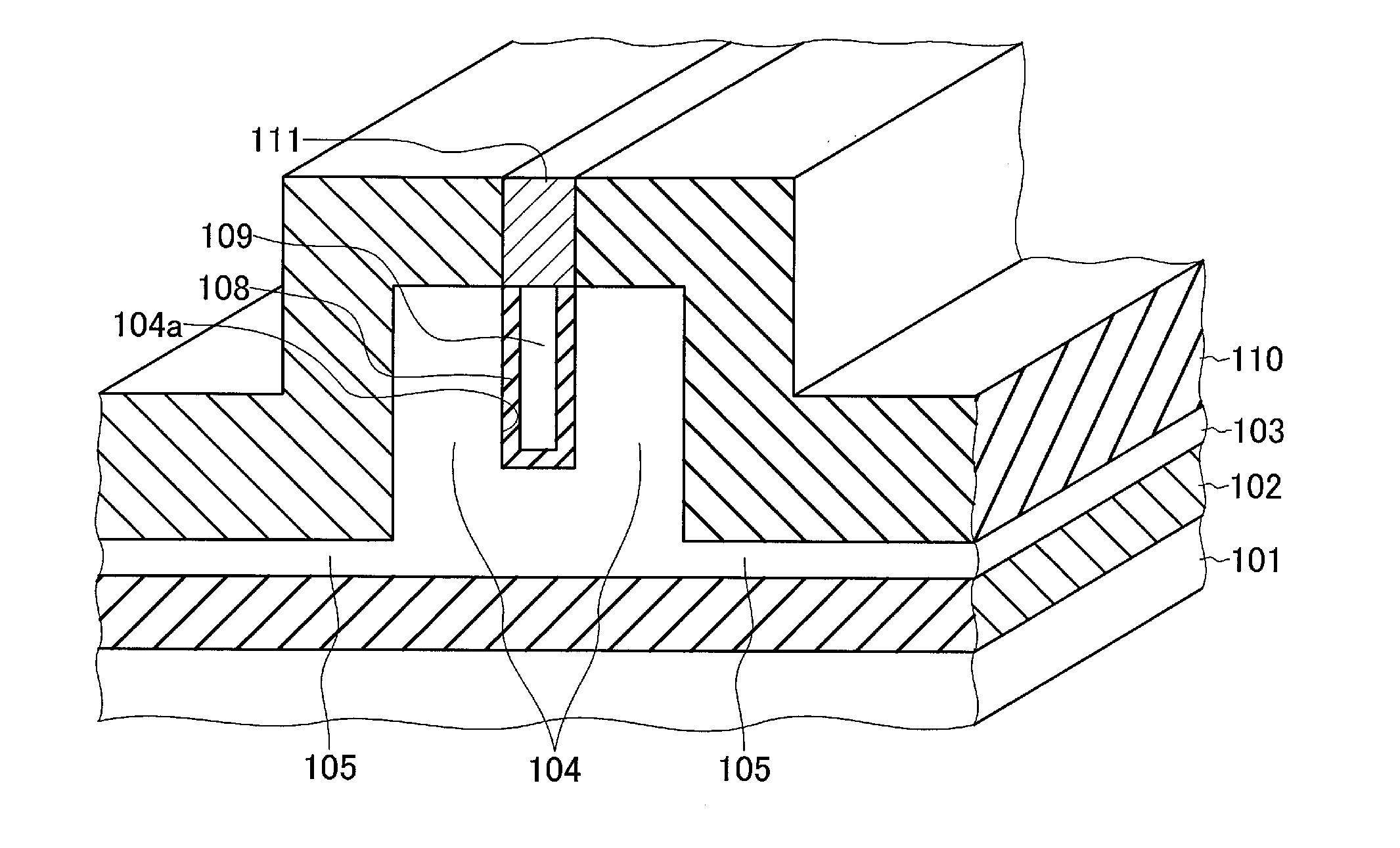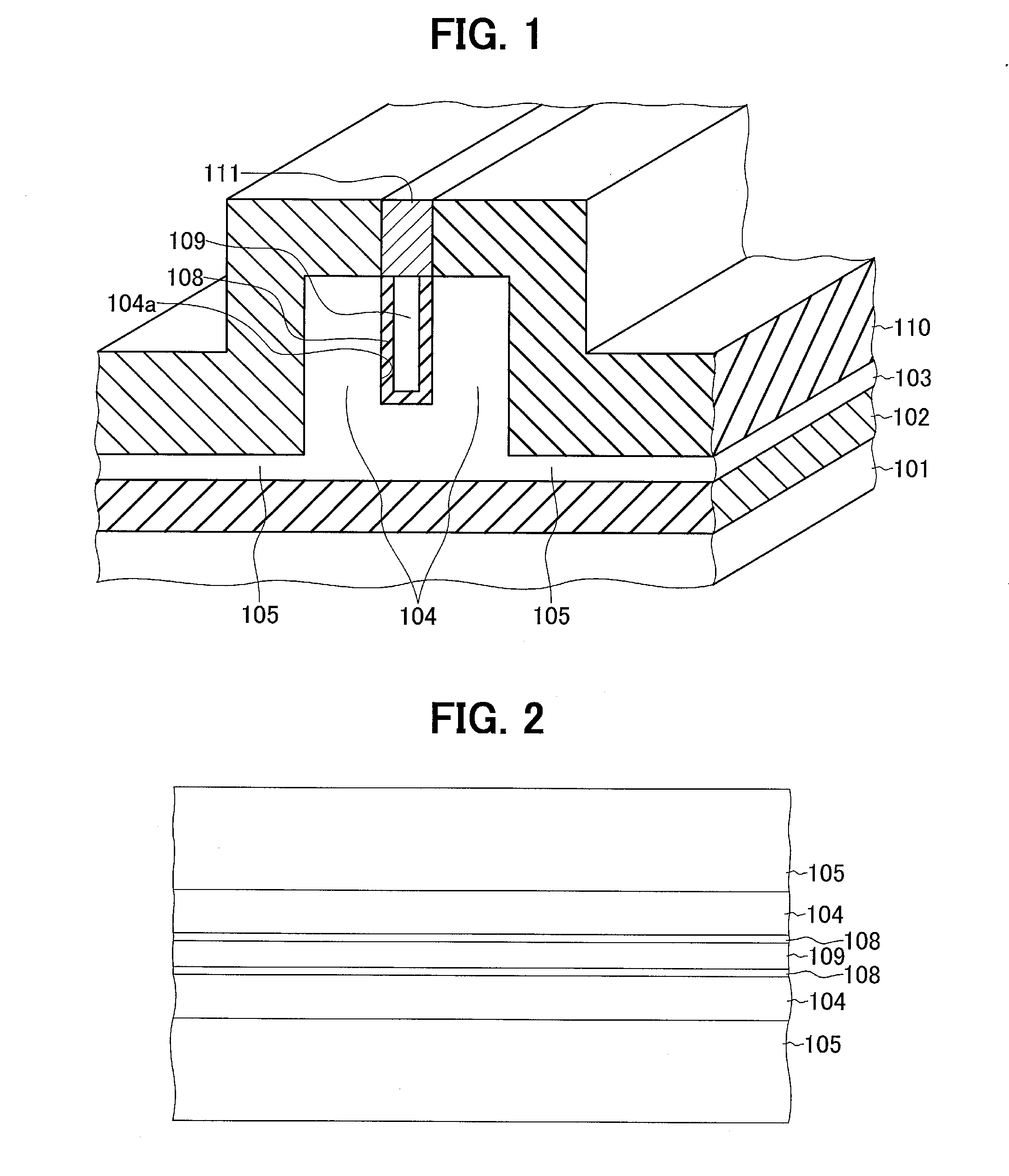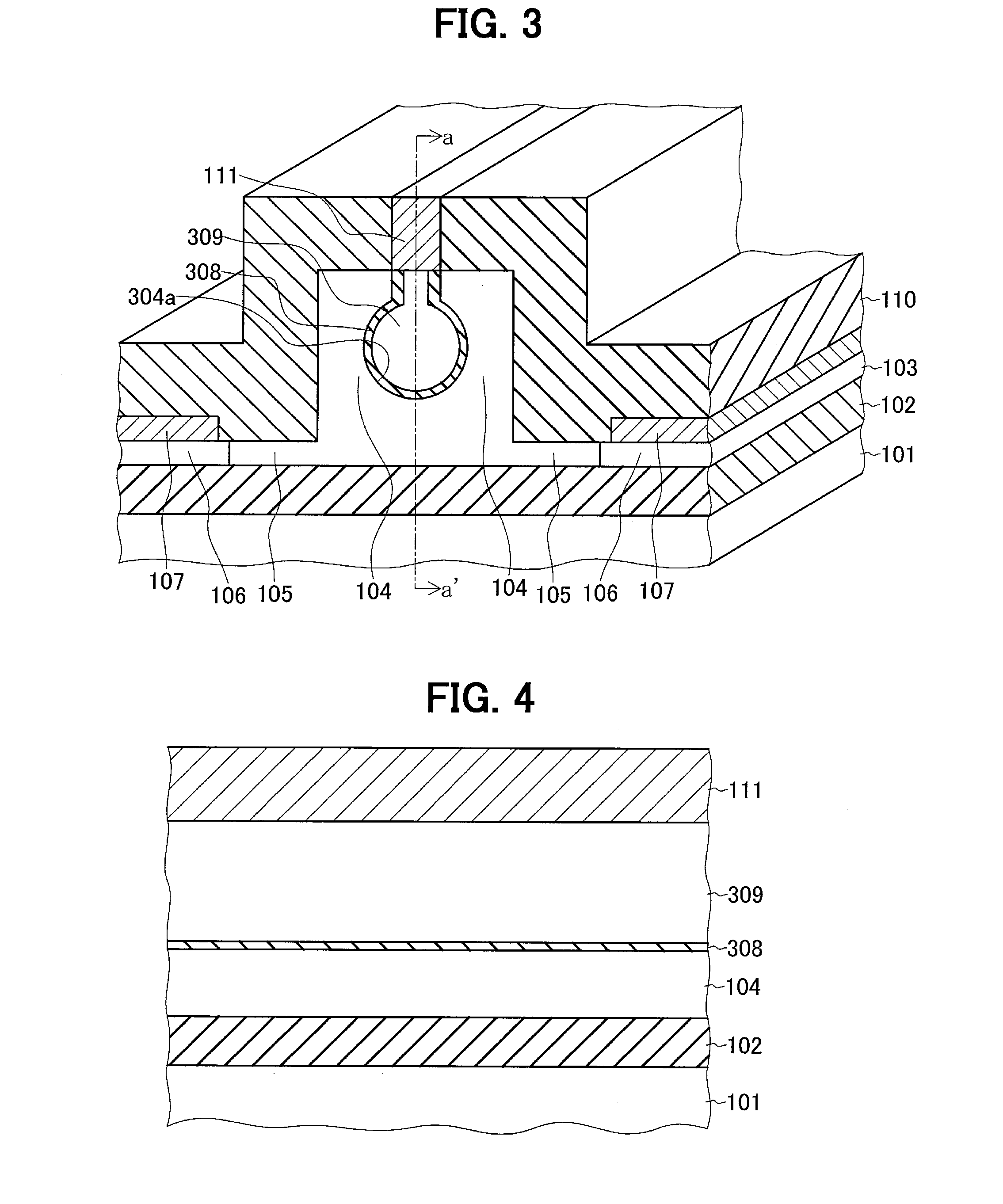Optical modulation structure and optical modulator
a technology of optical modulation and optical modulator, which is applied in the direction of optics, optical waveguide light guide, instruments, etc., can solve the problems of canceling the original electrooptic effect and many devices examined so far in poor optical modulation efficiency
- Summary
- Abstract
- Description
- Claims
- Application Information
AI Technical Summary
Benefits of technology
Problems solved by technology
Method used
Image
Examples
first exemplary embodiment
[0045]The first exemplary embodiment will be described first with reference to FIGS. 1 and 2. FIG. 1 is a perspective view showing the arrangement of an optical modulator according to the first exemplary embodiment. FIG. 1 illustrates a section, too. FIG. 2 is a plan view.
[0046]The optical modulation structure of this exemplary embodiment includes a lower cladding layer 102, a first silicon layer 103 integrally formed from silicon of a first conductivity type on the lower cladding layer 102 while including a core 104 and slab regions 105 arranged on both sides of the core 104 and connected to the core, a concave portion 104a formed in the upper surface of the core 104, and a second silicon layer 109 of a second conductivity type formed on a dielectric layer 108 in the concave portion 104a so as to fill the concave portion 104a. The core 104 includes the dielectric layer 108 and the second silicon layer 109 which are formed in the concave portion 104a. Note that in this exemplary emb...
second exemplary embodiment
[0069]The second exemplary embodiment will be explained next with reference to FIGS. 3 and 4. FIG. 3 is a perspective view of the second exemplary embodiment, and illustrates a section, too. In this exemplary embodiment, a concave portion 304a formed from the upper surface of a core 104 has a central region where the opening is wider than that of the upper portion of the core 104, and the sidewall of the central region is curved. FIG. 3 illustrates a section of the concave portion 304a including a rectangular portion on the upper side and a circular portion on the lower side. Hence, the section of a second silicon layer 309 of a second conductivity type formed on a dielectric layer 308 also includes a rectangular portion on the upper side and a circular portion on the lower side. In this exemplary embodiment as well, the core 104 includes the dielectric layer 308 and the second silicon layer 309 which are formed in the concave portion 304a.
[0070]This can make the region where the d...
third exemplary embodiment
[0075]The third exemplary embodiment will be described next with reference to FIGS. 5 and 6. FIGS. 5 and 6 are sectional views showing the arrangement of an optical modulation structure according to the third exemplary embodiment. FIG. 6 shows a section taken along a line b-b′ in FIG. 5.
[0076]In this exemplary embodiment, a plurality of concave portions 504a are provided in a core 104. In each concave portion 504a, a second silicon layer 509 is formed on a dielectric layer 508 to fill the concave portion. A plurality of first electrode extraction portions 511 are formed on the core 104 and connected to the second silicon layers 509, respectively. The plurality of concave portions 504a are arrayed in the running direction of the core 104 (light propagation direction) while being spaced apart from each other. In this exemplary embodiment, the plurality of concave portions 504a are arrayed at equal intervals.
[0077]In this exemplary embodiment, each concave portion 504a has a central re...
PUM
| Property | Measurement | Unit |
|---|---|---|
| communication wavelength | aaaaa | aaaaa |
| communication wavelength | aaaaa | aaaaa |
| thickness | aaaaa | aaaaa |
Abstract
Description
Claims
Application Information
 Login to View More
Login to View More - R&D
- Intellectual Property
- Life Sciences
- Materials
- Tech Scout
- Unparalleled Data Quality
- Higher Quality Content
- 60% Fewer Hallucinations
Browse by: Latest US Patents, China's latest patents, Technical Efficacy Thesaurus, Application Domain, Technology Topic, Popular Technical Reports.
© 2025 PatSnap. All rights reserved.Legal|Privacy policy|Modern Slavery Act Transparency Statement|Sitemap|About US| Contact US: help@patsnap.com



